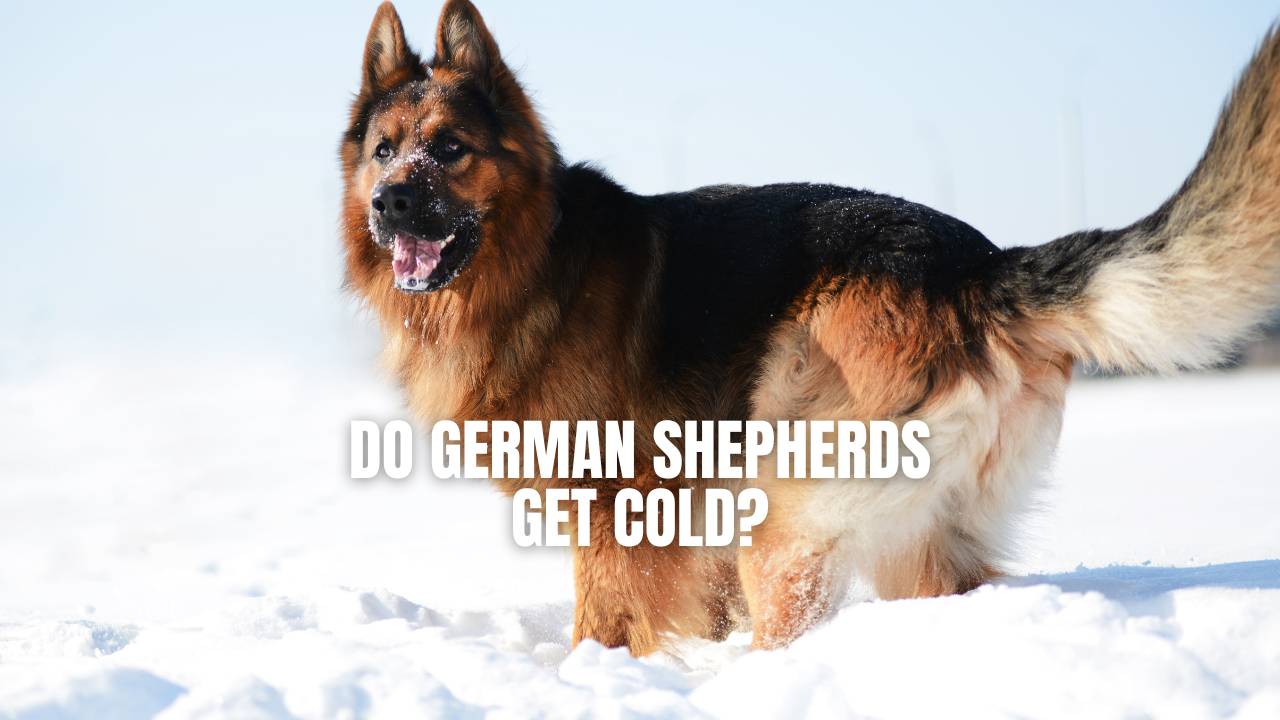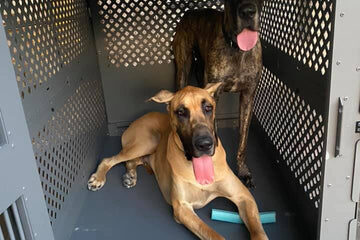German Shepherds can handle cold temperatures down to around 20°F for short periods. Their thick double coat provides insulation, making them better equipped for colder weather compared to other breeds.
German Shepherds are known for their ability to handle various weather conditions, including cold temperatures. Their thick double coats provide insulation and protection against the cold, allowing them to comfortably withstand temperatures down to around 20°F for short periods. While they can handle colder weather, it’s essential to monitor their exposure and provide adequate shelter when temperatures drop significantly to ensure their well-being.
Understanding their cold tolerance and taking proper precautions will help keep them safe and healthy during the winter months.
Understanding Cold Tolerance In German Shepherds
German Shepherds are generally robust and adaptable dogs, known for their intelligence, loyalty, and versatility. However, when it comes to cold tolerance, it is essential to understand how these remarkable canines fare in colder climates. This understanding allows responsible pet owners to ensure their German Shepherds are appropriately cared for in varying weather conditions, maintaining their health and well-being.
Factors Affecting Cold Tolerance
Several factors can influence a German Shepherd’s ability to tolerate cold temperatures:
- Double Coat: German Shepherds have a thick double coat that provides insulation against cold weather.
- Physical Condition: The dog’s health and physical condition can impact its ability to withstand colder temperatures.
- Acclimatization: Exposure to varying temperatures over time can increase a dog’s cold tolerance.
Comparison To Other Dog Breeds
When compared to some other dog breeds, German Shepherds often exhibit substantial cold tolerance due to their unique characteristics, such as their dense double coat and adaptable nature.

Credit: www.youtube.com
Ideal Cold Temperature Range For German Shepherds
German Shepherds are known for their thick double coat, which provides insulation in both hot and cold climates. The ideal cold temperature range for German Shepherds is important for understanding how to care for them in different weather conditions.
Optimal Conditions For Cold Exposure
German Shepherds can comfortably handle temperatures between 30°F and 75°F, thanks to their thick double coat. However, it’s crucial to consider individual factors such as age, health, and acclimatization to cold weather. Avoiding prolonged exposure to extremely low temperatures is key to preventing discomfort and health issues.
When Does Cold Become Unsafe
In temperatures below 30°F, German Shepherds may be at risk of hypothermia and frostbite, especially if they are not acclimated to such conditions. Understand your dog’s behavior and physical cues to assess their tolerance to the cold. Additionally, provide warm shelter and limit outdoor activities in harsh cold weather to ensure their well-being.
Health Risks In Cold Weather For German Shepherds
German Shepherds are robust dogs known for their strength and intelligence. However, they are susceptible to health risks in cold weather.
Symptoms Of Hypothermia
- Shivering
- Lethargy
- Weakness
- Slow heart rate
- Dilated pupils
Prevention Of Frostbite
- Avoid prolonged exposure to extreme cold
- Protect your dog’s paws with booties or paw balm
- Provide adequate shelter with insulation
- Regularly check for signs of frostbite
Adapting German Shepherds To Cold Climates
German Shepherds have thick double coats that allow them to handle cold temperatures well. They can tolerate and even enjoy spending time outdoors in the winter.
German Shepherds are known for their adaptability and resilience in various climates. However, when it comes to cold weather, it’s essential to ensure their well-being and provide them with the necessary care to keep them comfortable and safe. This article explores the key factors to consider when adapting German Shepherds to cold climates.
Importance Of Shelter And Bedding
In cold climates, providing an appropriate shelter for your German Shepherd is crucial. A well-insulated dog house or kennel with a raised floor can help shield them from freezing temperatures and strong winds. Ensure that the shelter is large enough for your dog to move around and lay down comfortably.
Additionally, providing proper bedding is essential for your German Shepherd’s warmth and comfort. Consider using thick blankets, straw, or specially designed dog beds that provide insulation. Bedding helps them retain body heat and prevents them from sleeping directly on a cold surface.
Diet And Hydration In Cold Weather
Adjusting your German Shepherd’s diet during cold weather is crucial for their overall health and to help them stay warm. Providing them with a balanced and nutritious diet can help maintain their energy levels and withstand the cold temperatures. Consult with your veterinarian to determine the appropriate diet for your dog’s specific needs.
Additionally, ensure that your dog has access to fresh and unfrozen water at all times. Dehydration can occur even in cold weather, and it’s important to prevent it. Consider using heated water bowls or frequently monitor the water source to prevent freezing.
…
Outdoor Activities In Cold Weather For German Shepherds
German Shepherds are known for their strength, agility, and endurance. Even in cold weather, these active dogs can still enjoy a variety of outdoor activities. However, it’s important to take certain considerations into account to ensure their safety and well-being. In this article, we will discuss exercise considerations and protective gear for extreme cold to help you provide the best experience for your German Shepherd.
Exercise Considerations
When it comes to exercising your German Shepherd in cold weather, there are a few important things to keep in mind:
- Monitor the temperature: While German Shepherds can handle colder temperatures than some other breeds, it’s crucial to pay attention to the thermometer. Generally, if the temperature drops below 20°F (-6.7°C), it may be too cold for extended outdoor activities.
- Shorten the duration: In colder weather, it’s advisable to reduce the length of your German Shepherd’s exercise sessions. Instead of one long walk, opt for multiple shorter walks throughout the day.
- Choose warmest times: Plan your outdoor activities during the warmest parts of the day, typically late morning or early afternoon. This will allow your German Shepherd to make the most of the sunlight and the slightly higher temperatures.
- Stay hydrated: Despite the lower temperatures, your German Shepherd can still become dehydrated during exercise. Make sure to provide access to fresh water before and after outdoor activities.
Protective Gear For Extreme Cold
When the temperature plummets, it’s essential to provide your German Shepherd with the right gear to protect them from the extreme cold. Here are some recommended options:
- Insulated dog coat: A well-fitting, insulated dog coat will help to keep your German Shepherd warm during outdoor activities in freezing temperatures. Look for one that covers their chest, back, and abdomen for maximum coverage.
- Protective paw wear: Your German Shepherd’s paws are vulnerable to cold surfaces and can even develop frostbite. Consider investing in booties designed to provide insulation and traction during winter walks or hikes.
- Moisturizing paw balm: Cold weather can cause dry and cracked paw pads. Applying a moisturizing paw balm can help prevent this and keep your German Shepherd’s paws in optimal condition.
- Reflective gear: During winter months, daylight hours are shorter, and visibility may be reduced. A reflective collar or harness will ensure that your German Shepherd is visible to motorists and other pedestrians.
By following these exercise considerations and providing the right protective gear, you can ensure that your German Shepherd stays safe, comfortable, and energized during outdoor activities in cold weather. Remember to monitor their behavior closely and make adjustments as needed to ensure their well-being. With proper care, your German Shepherd can continue to enjoy the great outdoors even in chilly temperatures.

Credit: www.reddit.com
Training German Shepherds For Cold Weather
German Shepherds have thick double coats that allow them to handle cold weather well. While some dogs may prefer to sleep outside, it’s important to monitor their temperature and provide shelter when the weather becomes too extreme.
Acclimatization Techniques
Training your German Shepherd for cold weather involves gradual exposure to lower temperatures through acclimatization techniques.
- Start by short outdoor sessions in slightly chilly weather.
- Gradually increase the duration to help them adapt.
- Provide warm shelter and clothing for extended exposure.
Recognizing Signs Of Discomfort
It’s crucial to be vigilant and observe your German Shepherd for signs of discomfort in cold weather.
- Look for shivering, whining, or seeking warmth.
- Check for cold ears, paws, or a hunched posture.
- Consult a vet if you notice prolonged discomfort.
Acclimatization Techniques
Training your German Shepherd for cold weather involves gradual exposure to lower temperatures through acclimatization techniques.
- Start by short outdoor sessions in slightly chilly weather.
- Gradually increase the duration to help them adapt.
- Provide warm shelter and clothing for extended exposure.
Recognizing Signs Of Discomfort
It’s crucial to be vigilant and observe your German Shepherd for signs of discomfort in cold weather.
- Look for shivering, whining, or seeking warmth.
- Check for cold ears, paws, or a hunched posture.
- Consult a vet if you notice prolonged discomfort.
Common Misconceptions About German Shepherds And Cold
German Shepherds are often associated with cold tolerance due to their thick, double coat and working dog background. However, there are several misconceptions surrounding their ability to handle cold weather. Understanding these misconceptions is crucial for ensuring the well-being of these beloved pets.
Debunking Myths About Cold Tolerance
One common misconception about German Shepherds is the belief that their double coat makes them impervious to cold weather. While their double coat provides insulation, it does not mean they can withstand extreme temperatures without proper care and attention. Understanding the limitations of their coat is essential for responsible pet ownership.

Credit: gsdcolony.com
Frequently Asked Questions
What Temp Is Too Cold For German Shepherd?
German Shepherds can handle cold temperatures well due to their thick double coats. Some may prefer to sleep outside if they have been trained as guard dogs or have a thick coat. They can tolerate extreme temperatures but should be monitored for signs of discomfort.
Can German Shepherds Sleep Outside In Winter?
German Shepherds with thick coats can handle sleeping outside in winter, especially if trained as guard dogs.
Can I Walk My German Shepherd In 20 Degree Weather?
Yes, it’s safe to walk your German Shepherd in 20-degree weather. Their double coat provides insulation.
Can German Shepherds Get Frostbite?
German Shepherds can get frostbite if exposed to extreme cold for an extended time.
Conclusion
German Shepherds, with their thick double coats, can handle cold temperatures well. While some may prefer sleeping outside, it’s essential to ensure they stay safe in extreme weather conditions. Understanding their cold tolerance helps in providing them with a comfortable environment year-round.



